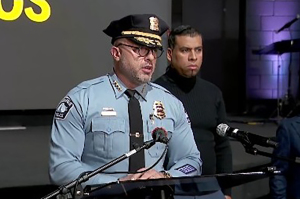What Should a Mother Do?
Any young woman or teen who gets pregnant out-of-wedlock faces three choices: abort her baby; keep her baby, or release her baby for adoption.
How she decides will impact her and her baby and in many cases it will affect the man who fathered the child as well. Too often, he is left out of the decision process, and just as often the young woman will make her decision without fully exploring the option of adoption.
Studies that compare birth mothers who keep their babies and become single parents with those who release their babies for adoption show that the latter are more likely to complete their education, be employed, and get married; they are less likely to have a repeat out-of-wedlock pregnancy and become divorced in later marriages.
Adoption can be a very healthy and life affirming solution for young women with an unplanned pregnancy. Ramirez notes that both adoption and abortion involve losses, but the loss for a woman in abortion is greater and it is permanent. If she consented to a closed adoption, a mother who places her baby for adoption may wonder where her baby was placed. But the mother who aborts her baby will wonder what her baby would have become if he or she had lived.
Nevertheless, according to Thea Ramirez, for every one woman who decides to release her baby for adoption, there are ten who decide to abort theirs. Every day, says Ramirez, who founded Adoption-Share, there are 3,300 abortions in America, and only 50 private adoptions of infants. Furthermore, in the U.S. although 7.3 million women seek out infertility treatments to achieve pregnancy, there are over a million abortions each year.
Too often when a woman starts to consider the option of adoption, she'll hear things like, "Oh, I could never give up my child to someone else" from those around her. Or, says Ramirez, her own physician may share his or her own negative experiences with adoption.
Yet, both the American College of Obstetricians and Gynecologists and the American Medical Association encourage their members to provide counseling to women facing an unplanned pregnancy and to give them information on the option of adoption.
Very often a woman in a crisis pregnancy won't visit a physician. And if she goes to an abortion center for a pregnancy test, she's more likely to hear a sales pitch for an abortion "to take care of the problem" than she is to get information about how to put together an adoption plan.
According to Planned Parenthood's latest annual report, abortions were 92 percent of their business in 2011. Adoption referrals accounted for only 0.6 percent. For every one adoption referral, Planned Parenthood performed 145 abortions.
Before Roe v. Wade, due to the stigma of out-of-wedlock pregnancy, women would often leave their community to give birth and then release their baby for adoption. But, says Ramirez, often these placements would be "closed" and the birth mother would have no say in the religious background or any other aspect of the family that her baby was being adopted into. Then, once the baby was placed with the adoptive-family, all possible communication was cut off and she wouldn't receive any further reports on the baby's health and well-being.
Such conditions could cause the birth-mother to experience extreme grief and have long-term attachment issues as well as feelings of shame and guilt.
Today, however, the adoption process has been modified substantially to give birth-mothers more say in the selection of adoptive-family. Also, in most states there is a 30 day waiting period during which she can still change her mind about the adoption. If she decides to go ahead with the placement, she is able to receive updates on the wellbeing of her baby, and she receives counseling both before and after the adoption is made final.
In part, because of a lot of misperceptions and myths about the harmful psychological effects of adoption on both the birth mother and the adoptee, Ramirez founded Adoption-Share, a social networking site to bring together those considering placing their babies for adoption with potential adoptive families and licensed adoption agencies and attorneys. The site shares information, endeavors to demystify the adoption process, and can streamline the process for families who already have an approved home-study.
Ultimately, what makes adoption so powerful, says Ramirez, is that "adoption is the poignant illustration of our faith. Jesus said we are the adopted sons of God, sons... meaning we are treated as equals and having full inheritance." She says, "There is nothing more miraculous then witnessing a family being born through adoption."
What should a mother do when she is pregnant and unmarried? Choose life-and, if she decides on adoption, she will also be giving that new life to those who may have been praying for just such a precious gift.



























